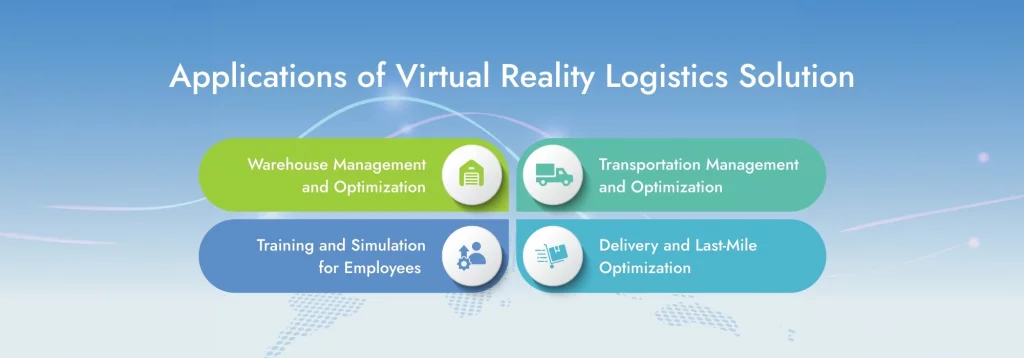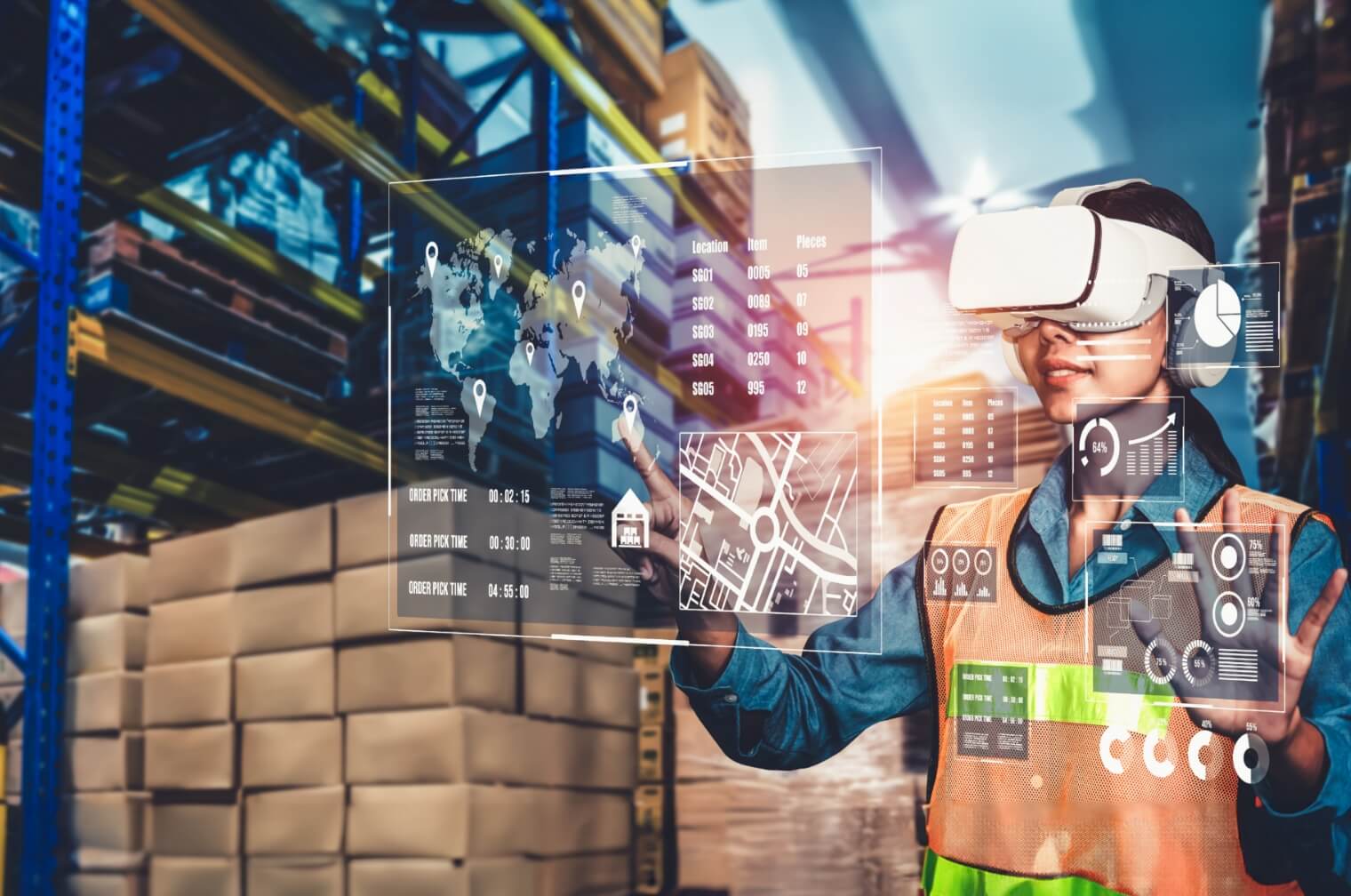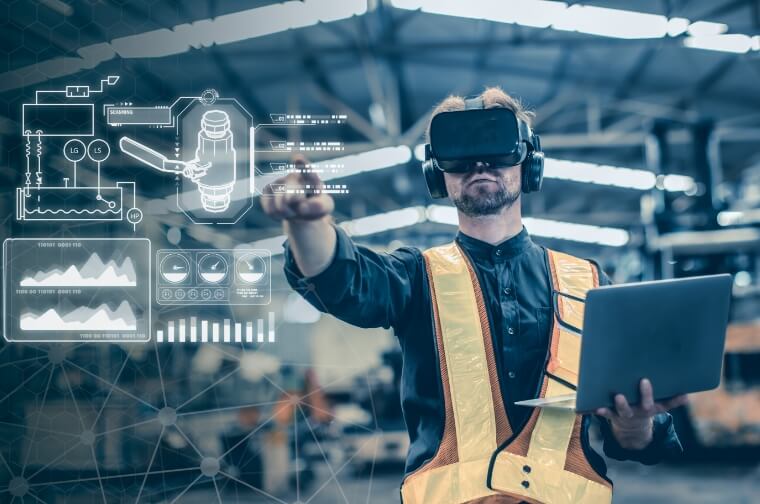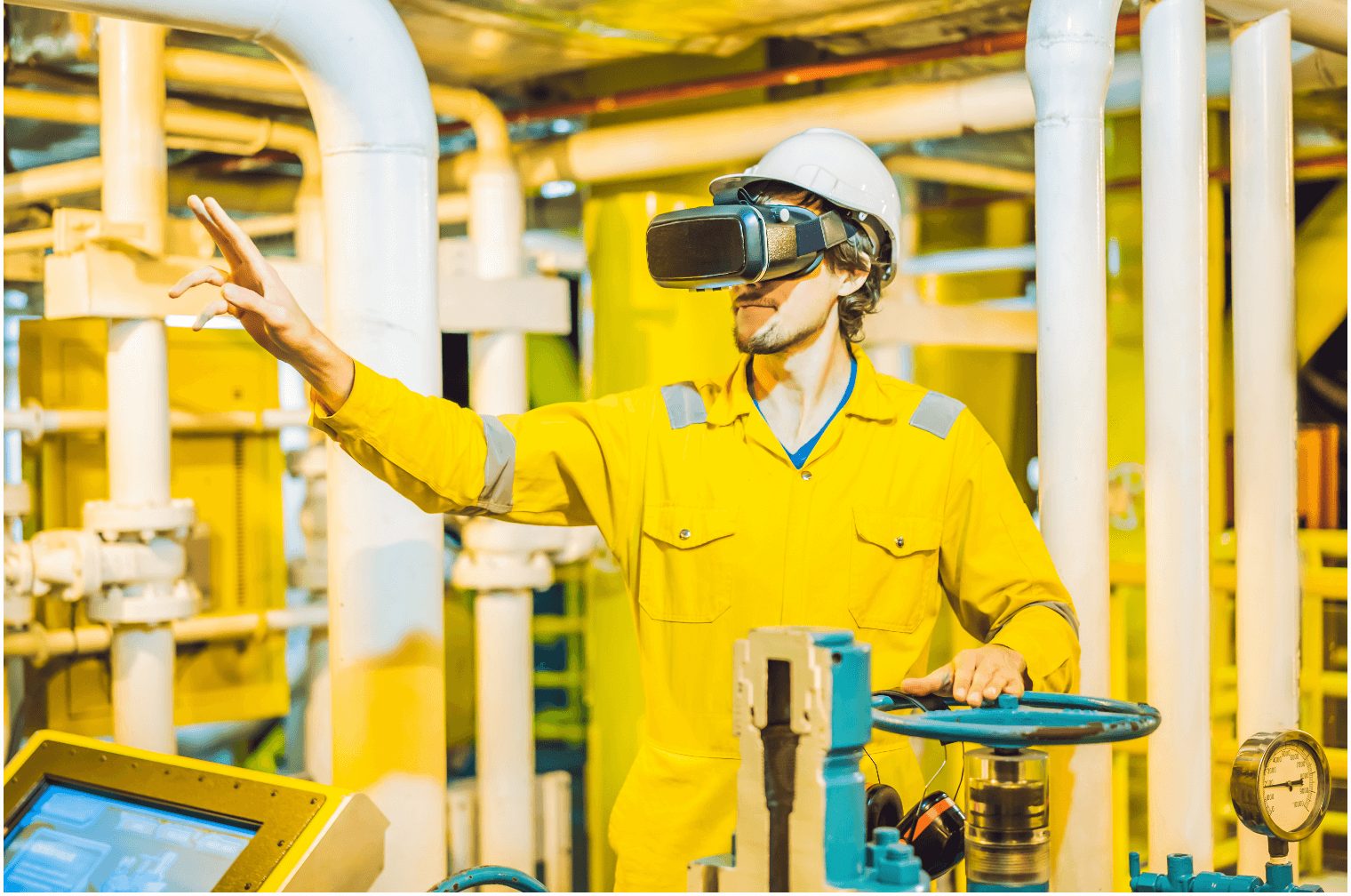Machine Learning and AI for revolution of Tech Companies are changing and streamlining businesses.
In today’s fast-paced and highly competitive business environment, optimizing logistics and supply chain operations is more critical than ever.
Explore the VR solutions for supply chain, examining its definition, benefits, applications, challenges, and real-world case studies.
Virtual Reality Logistics, often referred to as VR Logistics or VR in logistics, is the application of virtual reality technology to streamline and enhance various aspects of supply chain management.
VR solutions for supply chain involve the use of VR headsets and software to create immersive, three-dimensional simulations that mimic real-world logistics scenarios.
What is a virtual reality logistics solution?
A Virtual Reality Logistics development is a comprehensive system that combines VR technology with supply chain management.
It offers a virtual environment that allows users to visualize, interact with, and analyze various logistics processes and scenarios.
Virtual reality logistics solutions use VR headsets and software to create immersive environments that replicate real-world logistics operations.
Users can navigate these virtual spaces, monitor processes, and make informed decisions in real-time.
How VR can optimize logistics and supply chain operations
VR helps businesses optimize logistics and supply chain operations by providing real-time data, creating a collaborative environment, and enabling more accurate planning.
VR solutions for supply chain enhance visibility, reduce errors, and ensure smoother operations throughout the supply chain.
Comparison Between Virtual Reality Logistics Solutions and Traditional Logistics Solutions
VR logistics solutions revolutionize traditional approaches by providing a richer digital experience. Users can navigate virtual warehouses, visualize data in real time, and gain a deeper understanding of their supply chains.
They provide a real-time, 360-degree view of operations, enabling better decision-making and optimization.
Traditional solutions, on the other hand, often rely on static reports and historical data.
Benefits of virtual reality logistics solution
VR solutions for supply chain offer a multitude of benefits that can positively impact various aspects of logistics and supply chain operations.
Improved efficiency in logistics and supply chain operations
One of the primary benefits of Virtual Reality logistics solutions is improved efficiency.
Businesses can monitor and optimize their logistics processes, reducing delays, and ensuring products reach their destinations more quickly.
Enhanced safety in warehouse and transportation management
VR solutions for supply chains can be used to train employees in safe and efficient logistics operations, reducing the risk of accidents and injuries.
It also allows for the simulation of hazardous scenarios without real-world consequences.
Reduced costs in logistics and supply chain operations
By identifying and addressing inefficiencies, Virtual Reality logistics solutions can lead to significant cost reductions in transportation, warehousing, and inventory management.
Better customer experience through improved delivery times
Faster and more accurate deliveries result in improved customer satisfaction, which can lead to increased customer loyalty and positive reviews.
Challenges and limitations of VR solutions for supply chain
While Virtual Reality logistics development offers numerous benefits, they are not without challenges. Some of the key limitations and obstacles include:
- High Initial Costs: Implementing VR technology can be expensive, including the purchase of VR headsets and software.
- Complex Integration: Integrating VR logistics solutions into existing systems can be complex and may require specialized IT expertise.
- User Training: Employees may need training to use VR technology effectively.
- Data Security: Protecting sensitive supply chain data in a virtual environment is crucial.
Overcoming these challenges involves careful planning, cost-benefit analysis, and the selection of the right technology partners. With proper training and data security measures in place, many businesses successfully implement VR logistics solutions.
Applications of virtual reality logistics solution
VR solutions for supply chain leverage the immersive and interactive nature to optimize various aspects of the supply chain.

Warehouse management and optimization
VR logistics solutions can be used to optimize warehouse layouts, track inventory, and improve the efficiency of storage and retrieval processes.
Transportation management and optimization
In transportation, VR can assist in route planning, vehicle tracking, and load optimization, ultimately reducing costs and improving delivery times.
Training and simulation for employees
Virtual reality is a valuable tool for employee training, particularly in safety procedures, equipment operation, and emergency response.
Delivery and last-mile optimization
For last-mile delivery challenges, Virtual reality in logistics can assist in route planning and navigation, ensuring that packages reach their final destinations more efficiently.
Case studies of VR logistics solutions
Examples of Businesses that Have Successfully Implemented Virtual Reality Logistics Development:
- Walmart: Walmart employs VR simulations to train its employees in various logistics scenarios, resulting in safer and more efficient operations.
- DHL: DHL uses VR to optimize route planning for its delivery trucks, reducing fuel consumption and emissions.
- Amazon: Amazon is using VR to simulate the loading and unloading of trucks in its warehouses. This VR simulation helps Amazon to identify and eliminate potential bottlenecks in its order fulfillment process.
These businesses have reported improved efficiency, enhanced safety, cost reductions, and increased customer satisfaction as direct results of implementing VR solutions for supply chain.
Conclusion
Virtual Reality Logistics Solutions have emerged as a powerful tool for optimizing logistics and supply chain operations.
They offer numerous benefits, including enhanced efficiency, safety improvements, cost reductions, and better customer experiences.
By harnessing the power of VR solutions for supply chain, businesses can streamline operations, reduce costs, enhance safety, and improve customer satisfaction.
The world of logistics is evolving, and virtual reality is leading the way. Develop your projects with such immersive technologies.
Frequently asked questions
VR can be utilized for virtual warehouse design and layout planning, allowing companies to optimize space and improve efficiency.
Virtual reality in logistics can streamline training processes, instead of investing in physical training facilities and equipment to save costs.
VR has the potential to greatly improve safety in logistics. By creating virtual environments, workers can undergo safety training in realistic scenarios without being exposed to actual risks.
Virtual reality in logistics enables teams located in different geographical locations to virtually meet and collaborate in real-time, eliminating the need for travel expenses.









